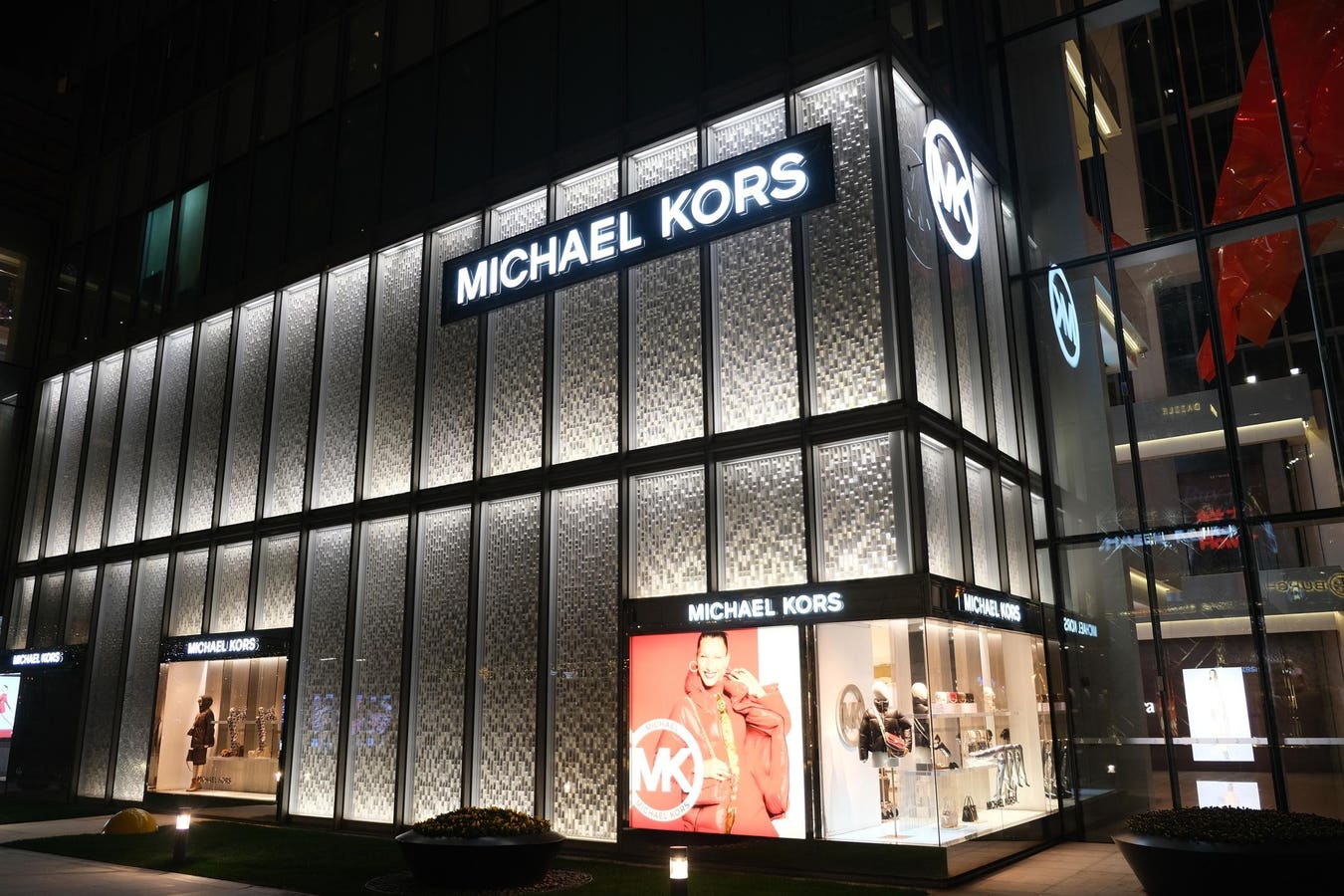Tapestry has fired back at the Federal Trade Commission’s move to block its $8.5 billion acquisition of Capri Holdings. In a filing in the U.S. Southern District Court of New York, Tapestry and Capri demand the FTC define the parameters of the “accessible luxury handbag” market, something it has failed to do, but that the law demands.
The motion requests an expedited response from the FTC to “define the product market you intend to prove at trial.” U.S. District Court Judge Jennifer Rochon agreed and ordered oral arguments for next week. Tapestry will also be filing its earnings report next Thursday, May 16.
The FTC opposes the merger of $6.7 billion Tapestry’s Coach, Kate Spade and Stuart Weitzman brands with $5.6 billion Capri’s Michael Kors, Versace and Jimmy Choo.
It claims the combined companies will dominate the accessible luxury handbag market, stifle competition and harm consumers by exerting too much control over prices, discounting, design, innovation, marketing and advertising. It also argues for protecting the 33,000 employees affected by the merger.
Coach And Tapestry In The Cross Hairs
Everything hinges on the definition of the “accessible luxury handbag market,” and it seems that Coach with $5 billion revenues in fiscal 2023 and Michael Kors at $3.9 billion, but only $2.6 billion in the Americas, are the brands that get the FTC’s hackles up. Coach doesn’t report U.S. results, but it operates about twice as many international stores (609) as it does in North America (330).
Stuart Weitzman ($300 million) and Jimmy Choo ($644 million) are primarily shoe brands and tiny by comparison. Kate Spade ($1.4 billion) and Versace ($1.6 billion) play across a wider fashion spectrum, though both offer handbags. Yet neither approach Coach nor Michael Kors in terms of size and scale.
Writing in Luxury Daily, attorney Jonathan Lazarow of the law firm Ambrose, Mills and Lazarow, suggests the accessible luxury market is so big no single company can dominate it.
“The combined entity will not control the accessible handbag market. The FTC’s claim that the combined business will have the size and scale to control prices and choice in the accessible handbag market is just not true,” he wrote.
He also argues that blocking the Tapestry-Capri merger may reduce competition and he makes a valid point. Emerging brands need investors who eventually need to monetize their investment by taking the company public or selling it to strategic buyers like Tapestry or other conglomerates.
“If the FTC holds the position it lays out in this matter, then it may be more difficult for new and emerging brands to attract financial sponsors, resulting in fewer businesses operating in the space and creating a less competitive market,” he wrote.
He believes the deal will ultimately go through, but “it will require selling off some assets.” That’s something that Tapestry and Capri are hellbent on avoiding.
Help Not Hurt Competition
In the filing, Tapestry asserts that a key purpose of the merger is to get the Michael Kors’ brand back on track, since it’s experienced declining sales for years. Putting the magic back into the Michael Kors brand will help not just invigorate the brand but the market as a whole.
“Tapestry hopes to achieve this outcome in a space where hundreds of rival brands compete, where new entrants quickly gain popularity and sales when a celebrity appears with the new entrant’s bag and where consumer perceptions of brand and product attributes are critical to purchasing decisions,” the filing states.
There’s something to Tapestry and Capri’s iron-sharpens-iron argument because innovation by one brand inspires other established and emerging brands, making the overall market pie larger.
Defining The Scope
The defendants ask the FTC to identify the “contours of the market” that will be harmed as a result of the transaction, something it claims the FTC has “steadfastly refused.”
During a meeting on April 30, the FTC presented its “alleged calculations” of the market share and increase in market concentration the combined companies would have. However, it neither defined the set of competitors and competing products or the basis on which the market shares were calculated, such as revenues or unit sales.
“There is no means of calculating market share without a denominator for the total competitive set,” Tapestry and Capri argued, which the FTC claimed would be revealed later in the proceedings. However, waiting till then will hamstring their ability to prepare a proper defense.
“Its failure to define what an ‘accessible luxury handbag’ is appears to be a conscious and strategic choice,” they argue. “Defendants presently intend to show, among other things, that the FTC’s market is inconsistent with commercial realities because it does not accurately reflect how competition occurs in 2024. But Defendants simply cannot do that effectively without knowing the basic contours of the FTC’s alleged product market”
Distinction Without A Difference
Not only has the FTC been loosey-goosey defining handbags, it’s been even less forthcoming about what accessible luxury is. “It’s attempts to distinguish ‘mass-market’ and ‘true luxury’ handbags further muddles the scope of the alleged ‘accessible luxury handbag relevant market,” the companies argue.
If by price, say between $100 and $1,000 where “true luxury” begins, it’s absurd to believe that a $1,100 handbag doesn’t compete with one at $900 or that a $125 handbag on sale for 25% off suddenly becomes a mass-market handbag.
Using the materials of composition to define the mass-accessible-luxury handbag market are equally invalid. The FTC holds “true luxury” is made from the “finest materials and leather,” while accessible handbags are just “high-quality materials” and mass-market are “often composed of manmade materials.”
This is a classic example of a distinction without a difference and meaningless in practical terms, most especially since so many higher-end brands are leaning into using recycled plastic for their bags, a material that often carries a premium price tag.
Where and how handbags are manufactured also provides no guidelines. The FTC claims mass-market bags are made in China and accessible luxury in Asia. Excuse me?
And accessible bags have fine craftsmanship while “true luxury” offers the “finest craftsmanship.” So what about bags manufactured in the U.S., Europe or other countries at different price points, using a variety of materials and showing different levels of craft?
Luxury In Name Only
Under the banner of Tanner Leatherstein, YouTube, Instagram and TikTok blogger Volkan Yilmaz puts the kibosh on the FTC’s “true luxury” claims. He tears apart luxury handbags for the camera to expose how they are made and their quality, or lack thereof, and what the product would actually cost to make.
“A bag might look good from the outside, but when you rip it open and look inside, it tells another story,” he he told the New York Times. “When I started dissecting bags, I wanted to show that the price really wasn’t about the leather or the materials used. It was mostly about the status associated with a label.”
Ironically, most luxury handbags don’t stand up to Tanner Leatherstein’s treatment, but more moderate-priced ones deliver the goods. He calls out Strathberry, Polene and Coach as delivering excellent quality for the price.
Luxury Is In The Eye Of The Beholder
All of which shows luxury, whether true or accessible, is in the eye of the beholder. Unfortunately, the FTC is turning a label that Coach coined some twenty years ago against itself.
“Accessible luxury” was originally a marketing term to position the Coach brand. It was intended to communicate to consumers a Coach bag offers comparable quality to the European luxury labels but more affordably priced.
“Coach never intended it to define a product market, nor does it actually do so,” it alleges. That is absolutely true.
As a market researcher focused on the luxury market for more than twenty years, I have a hard enough time defining luxury, let alone “accessible luxury.” It becomes a question of “you know it when you see it,” and I and most of my colleagues classify so-called “accessible luxury” brands firmly in the luxury camp.
See also:
Read the full article here





